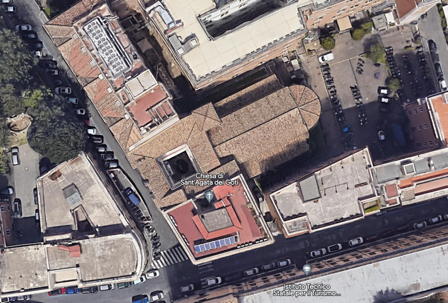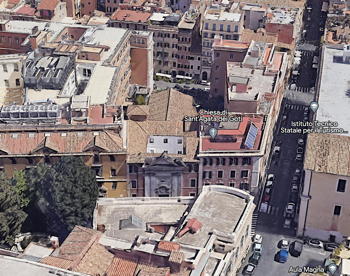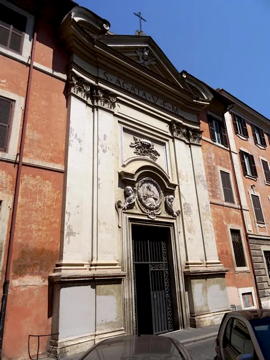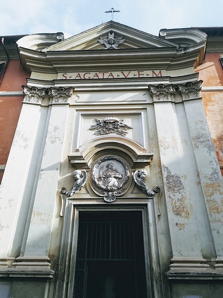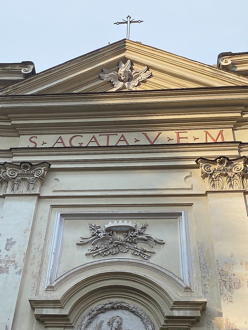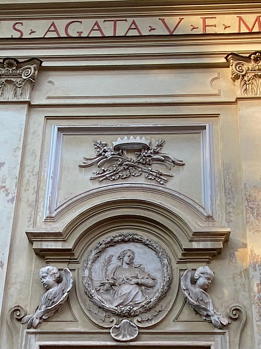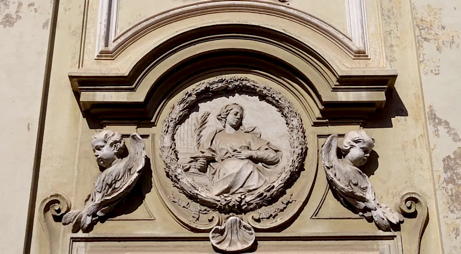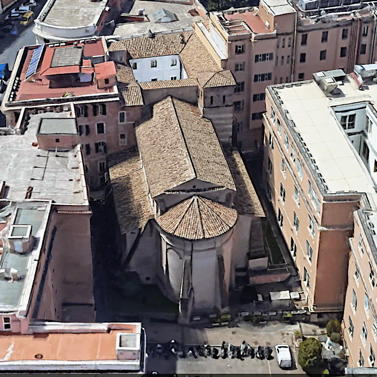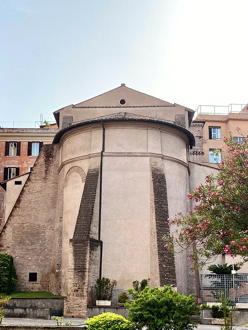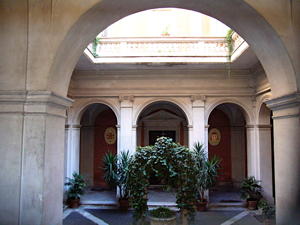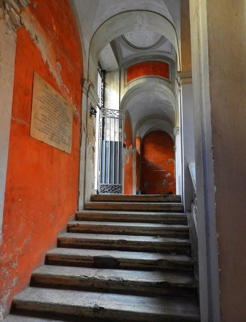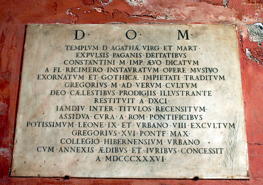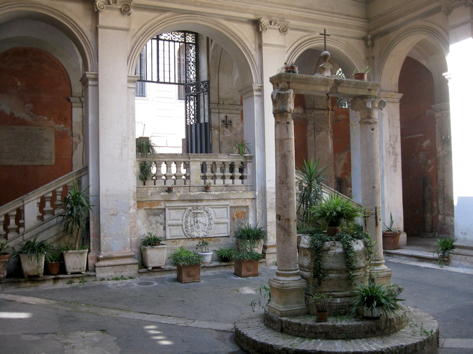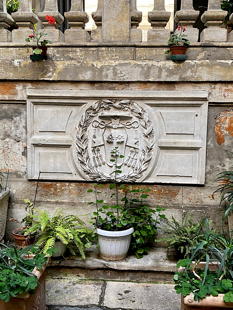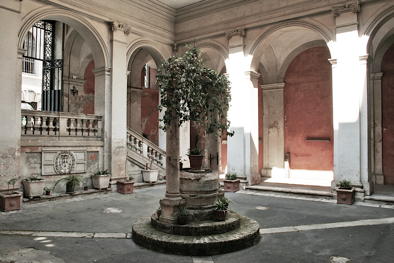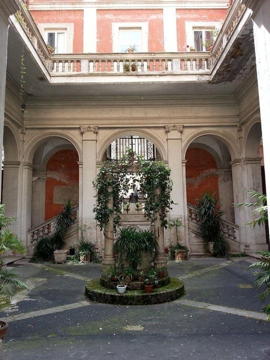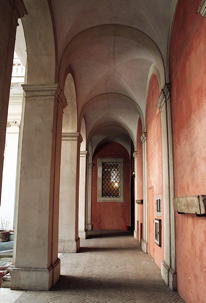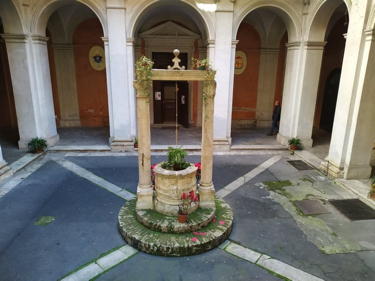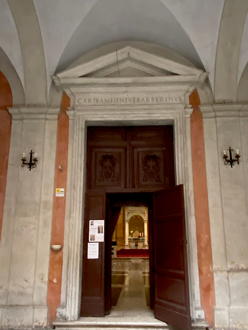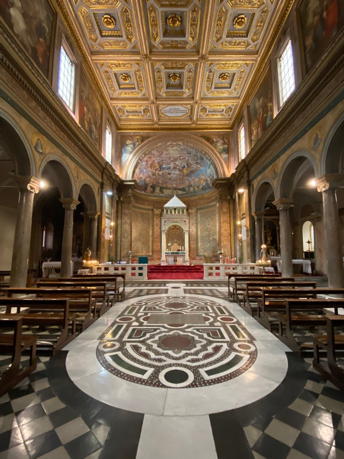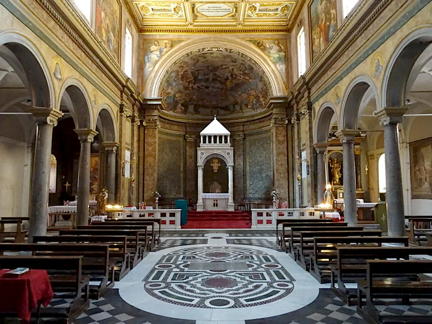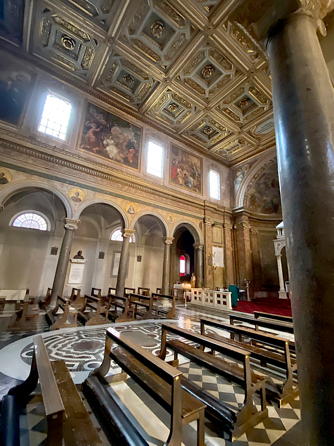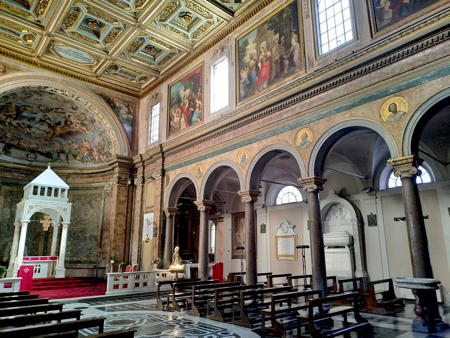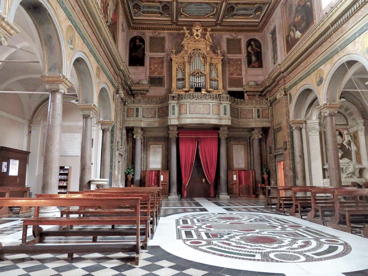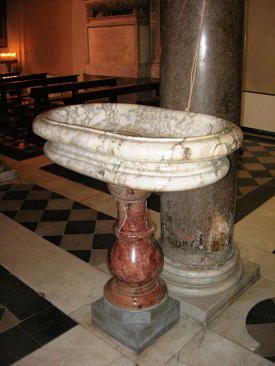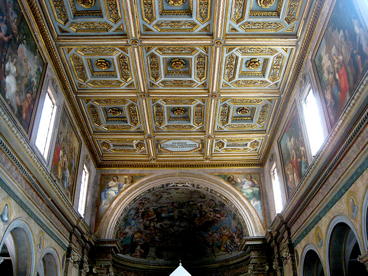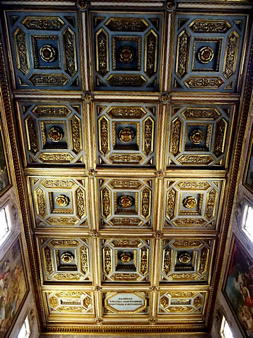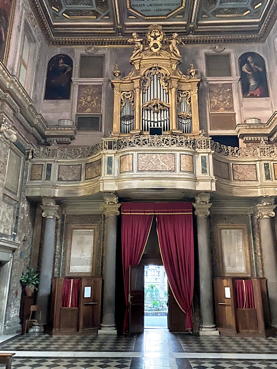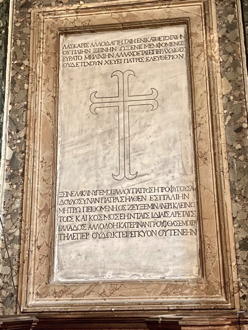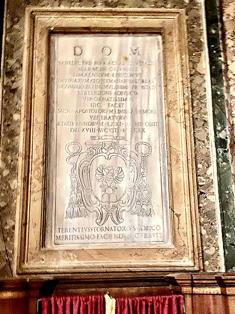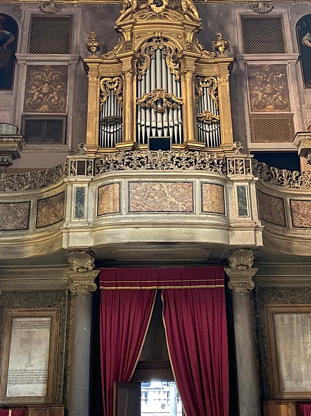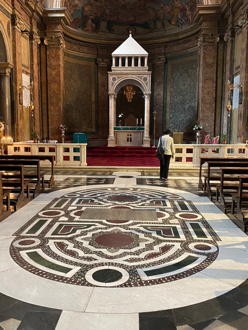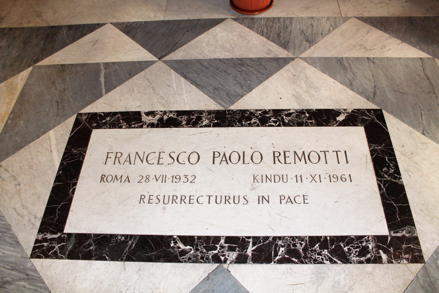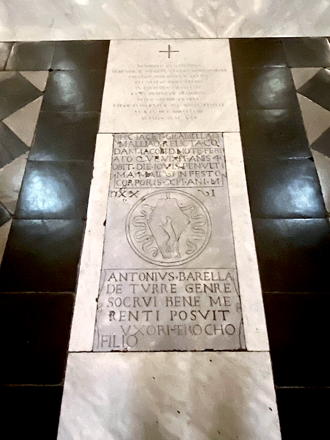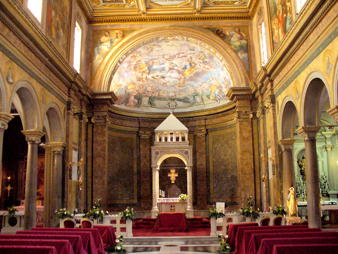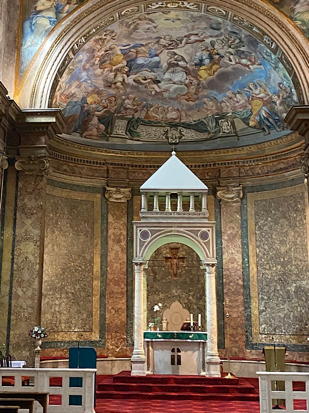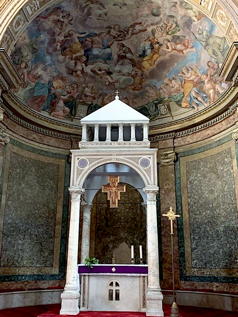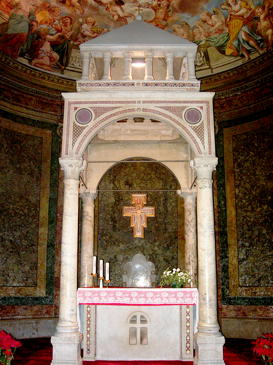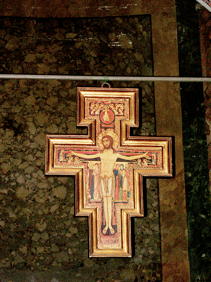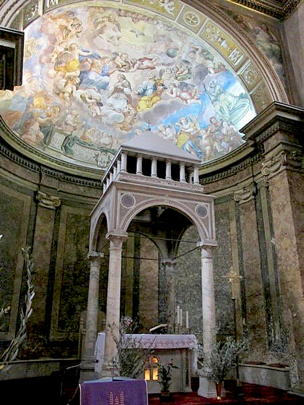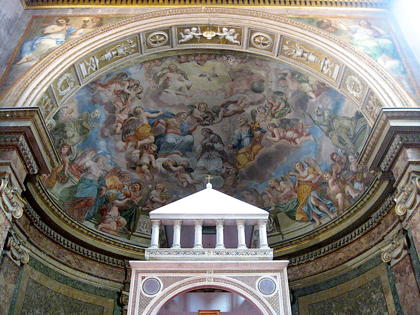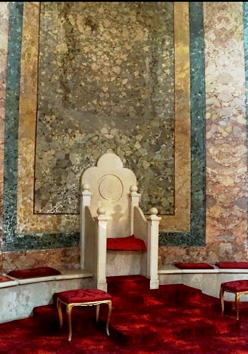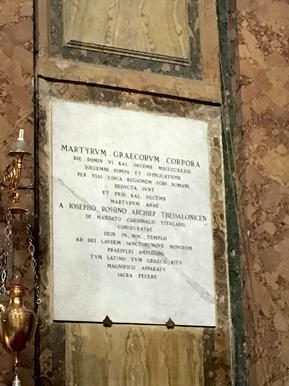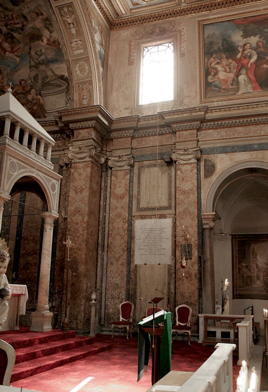Sant'Agata dei Goti (alla Suburra) is a palaeochristian basilica of uncertain date, as well as a conventual and titular church in Rome located in Rione Monti (I). It is a very old church and is dedicated to the Sicilian martyr Saint Agatha.
For reference, a plan of the church is available
here.
The church was built (or possibly rebuilt) by
Flavius Ricimer (who effectively ruled Rome from 456 until his death in 472) for the small Gothic colony of Arian observants who had settled in the area. When the Arian heresy was finally suppressed in Rome in the first half of the 6th century, the church was then abandoned and fell into disrepair. In the year 592, St. Gregory the Great restored the church for Catholic worship,
The building was restored again under Pope Leo III (795-816) and it was probably on this occasion that the monastery was built, entrusted by Leo IV (847-855) to the Benedictine monks, who had the bell tower erected in the 12th century. It was about this time the remains of the so-called Greek martyrs, who were buried in the Catacombs of San Callisto, were removed to the church.
In 1461, Cardinal Francis Gonzaga embellished the floor in late-Cosmatesque style and the middle part still exists in the Church today.
After the Sack of Rome in 1527, and after much neglect, the church was in need of extensive restoration. At the expense of Cardinal Niccolò Ridolfi, the works was carried out (1535-36) by the Sienese architect and hydraulics engineer,
Tommaso Ghinucci.
In 1838 it became the site of the Irish College, by the decision of Gregory XVI. In 1925-1933, the Bank of Italy paid for a restoration which involved stripping the stucco off the exterior walls, rebuilding the ciborium and relaying the floor. Then in 1926 the church was entrusted by Pius XI to the Congregation of the Sacred Stigmata of Our Lord Jesus Christ (the
Stigmatines), and the adjacent building became the residence of their Generalate.
